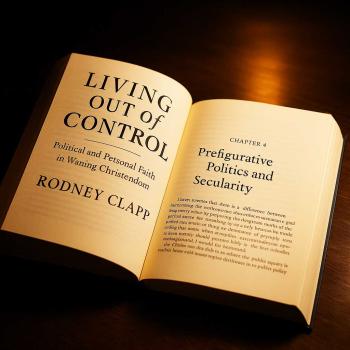Be that as it may, the other aspect of the dispute also centered around conflicting interpretations of Deuteronomy, which frequently refers to an unnamed "place that YHWH your God will choose to make his name dwell" (Dt. 12:5-6, 11, 14, 18, 21, 14:23-24, 16:2, 6, 11, 26:2, 10). Jews, of course, insisted that this unnamed "place" was Jerusalem, while the Samaritans just as forcefully insisted that it was Mt. Gerizim. The first patriarchs, the Samaritans argued, built altars on Gerizim (Gen. 12:6, 33:19-20), but not in Jerusalem. And in Samaritan tradition, Mt. Gerizim is the biblical Bethel ("House of God") where Jacob saw the stairway into heaven (Gen. 28). Thus both Jews and Samaritans claimed that their temple was the authentic temple of YHWH while the rival temple was unauthorized. So, having found a prophet, the Samaritan woman asks him which temple is authentic.
Worship (Jn. 4:21-26)
The answer Jesus gives is unexpected. He ignores her question about where to worship, focusing instead on two other questions: who and how to worship. The Greek word to worship in its nominal and verbal forms occurs ten times in these five verses, but only three times in the rest of the Gospel of John (9:31, 38, 12:20). (Greek: to worship, proskuneō; worshipper, proskunētēs; in the Septuagint it translates the Hebrew hištaḥǒweh, meaning to "bow down") The Greek word "worship" was a technical term in first century Jewish culture. It meant literally to prostrate oneself on the ground in submission or adoration. This ritual act was performed throughout the ancient Mediterranean world and the Near East. In its broader context it was a sign of devotion to a god by prostrating oneself before the image of that god. Based on concepts of divine kingship, royalty often required their subjects to bow down before them as well. Modern readers often look at this passage about worship through the lens of 2000 years of Christian history and theology rather than through the lens of first century Judaism. What did worship mean to first-century Jews?
First-century Jewish worship focused on visiting the temple at special pilgrimage feasts and offering sacrifice. Throughout the Gospel of John, Jesus is depicted as repeatedly worshipping at the temple during the great temple festivals. He never objects to the practices there, but only the disrespectful profanation of the temple because it is his Father's house (2:16). There is no criticism by Jesus of the temple or its rituals. Even Caiaphas, the High Priest who condemns Jesus to death, is able to unwittingly make a true prophecy because he was High Priest (11:49-51). The person holding the office might be corrupt, but, for John, the office itself was sacred.
Other forms of Jewish worship included shared meals (Passover), prayers, teaching, singing, visionary activities, and study. It is important to note that all of these first-century Jewish practices of worship continued to be performed by the earliest Christians. Furthermore, the earliest Christians, including Paul, continued to worship at the Jerusalem temple during the four decades after Jesus' death, until the temple was destroyed in C.E. 70 (Acts 2:46, 3:1-10, 5:20, 40-42, 21:6, 22:14-21, 24:18, 25:8). No early Christian writers objected to this temple worship. The destruction of the temple obviously ended Christian worship there, but not the influence of temple ideology and mythos on Christian thought and worship.
Given this context, what is Jesus saying? His first statement is in the form of a prophecy: "the hour is coming when neither on this mountain nor in Jerusalem will you worship the Father" (4:21). Rather, "true worshipers will worship the Father in spirit and truth" (4:23). This passage could be taken in one of several ways. First it may be an oblique prophecy of the destruction of the temple in Jerusalem: there will come a time when no one can worship in Jerusalem because the temple will be destroyed. Second, it perhaps means that while worship will continue at these two places, it will no longer be accepted by the Father. Finally, it may mean that true worshippers of the Father will not need a temple to worship in. So a major exegetical question posed by this passage is: does the phrase "worship in spirit and truth" imply the necessary abandonment of worship at the physical temple in Jerusalem? Or does "worship in spirit and truth" mean the fulfillment of the proper ideal Jewish temple worship, which can then be done in the temple, synagogue, or anywhere else?
The key to understanding this passage is to contextualize it with the earlier chapters in John. It should be seen as the continuation of these earlier chapters describing a pattern of ritual immersion, the purification of the temple, immersion in the Spirit, and being born from above, which culminate in becoming a "true worshiper" (4:23), who can "worship the Father in spirit and truth" (4:23) It is describing the coming of "the hour"—the death and resurrection of Jesus—when the Holy Spirit will be poured "without measure" (3:34) upon all those who accept Jesus as the Messiah.





